How Did Caporetto Occur?
The Caporetto offensive launched 24 October 1917 along the Isonzo River, is considered one of the most decisive victories of the 20th century. It was boldly planned, very ably organized, and well executed. While two Austrian armies, under General Svetozar Borojevic von Bojna, attacked the Italian Third Army on the Carso and Bainsizza Plateaus on the lower ground near the Adriatic shore, further north in the more mountainous part of the Isonzo sector, the German-Austrian Fourteenth Army, targeted the Italian Second Army. Comprising the six German divisions and nine Austrian under German General Otto von Below, with Konrad Krafft von Dellmensingen as his chief of staff, the Fourteenth Army's masterful double breakthrough proved decisive, annihilating the Second Army.
The assault stunned Italians troops and their commanders, who fell back in confusion: Below's van reached Udine, the former site of the Italian general headquarters, by October 28 and was on the Tagliamento River by October 31. . .The Italians [eventually] sustained about 500,000 casualties, including 250,000 taken prisoner. How could such a catastrophe occur in so short a period? The answer–I believe–lies in the faulty deployment by the Italian Commando Supremo. Even the anxious Italian King, who visited Caporetto a few days before the attack, expressed skepticism over the dispositions made by his generals. The map and photos below should demonstrate these weaknesses to you.
The assault stunned Italians troops and their commanders, who fell back in confusion: Below's van reached Udine, the former site of the Italian general headquarters, by October 28 and was on the Tagliamento River by October 31. . .The Italians [eventually] sustained about 500,000 casualties, including 250,000 taken prisoner. How could such a catastrophe occur in so short a period? The answer–I believe–lies in the faulty deployment by the Italian Commando Supremo. Even the anxious Italian King, who visited Caporetto a few days before the attack, expressed skepticism over the dispositions made by his generals. The map and photos below should demonstrate these weaknesses to you.
Click on Image to Expand
Important things to note: A. The opening day's battlefield was huge, roughly 12 x 12 miles; B. The front line and the Italian defensive lines weave back and forth across the Isonzo (Soca) River; C. The large gap between Italian 2nd and 3rd lines; D. Tight fit of all three Italian Lines west of Tolmino (8).
Following the Map from Top (North) to Bottom (South)
- Mte. Rombon (1) was the site of ferocious mountaintop fighting right up to the opening of the 24 October offensive. It marks the northern extent of the Caporetto battlefield. Occupied by Bosnian troops, it gave the German-Austrian forces an excellent view of their enemy's deployments before the operation. Far below its peak on the river lies the village of Plezzo (2).
- Plezzo (2) was just behind the front line of 24 October. The front here crossed the Isonzo, meaning attacking forces would not need to force a river crossing, simplifying things greatly for them. Here Austrian divisions and German gas officers would execute the most successful gas attack of the First World War, and charge through a huge opening that opened the road to Caporetto. The photos below show the area today
Click on Image to Expand
The view from the 3rd Italian line above the river bend looking northeast toward Plezzo (2) along the narrow river valley. Mte. Rombon (1) is in the far distance. In this area the mountains are quite close on either side of the river.
Click on Image to Expand
However, just along the river near Plezzo (2), there are some low flat spaces. Italian forces deployed here were hit with a lethal gas barrage, allowing a clean breakthrough by Austrian divisions. One of the dirty secrets of WWI is that gas attacks were effective when used intelligently.
- Moving south past a big bend in the Isonzo is the town of Caporetto (3), the opening objective and namesake of the battle. It is a road-hub at the head of a second valley (off to the right on the photo below) and its capture allowed the deep pursuit into northern Italy after the initial rout.
- Mte Nero (4), at 2244 meters on the left of the photo, was on the front line on 24 October. Three Italian divisions, the 43rd, 46th, and 50th, were deployed just below its peak and that of a second summit on Mte Mrzili (5). Heavy fog and rain on the morning of the battle obscured the vision of these units. South of Caporetto most of the Italian 2nd line and all of the 3rd line were on the opposite side of the river. By mid morning, unbeknownst to them, the three divisions on Nero and Mrzili were being flanked from their left (also left on the photo) by the enemy units that had broken through at Plezzo (2) and were marching down the river edge. This was not their only danger, though.
Click on Image to Expand
About 10 miles south of Caporetto (3) lies another river town, Tolmino (8). General von Below was executing a second breakthrough there.
- Below is a spectacular view of Tolmino (8) from a hang glider above the Isonzo. Once again the front line and 2nd and 3rd Italian lines cross the river at a perpendicular just north of the town. Here the Italian positions were too tightly bunched. Both the town and the high hill to the right of the town–part of the Tolmino Bridgehead (7)–were occupied by German troops, as was the hill to the left of town which offers a superb view down the valley towards Caporetto. Once again the Central Powers were able to attack on both sides of the river at the same time. Additionally, a strong attack here had the potential of punching through all three Italian positions very quickly; and an assault from the Bridgehead (7) could be mounted attacking downhill. It was a position of maximum danger for the Italian Army and maximum opportunity for their opponents.
Click on Image to Expand
For orientation purposes: Just out of view to the left of the glider is Mte Mrzili (5) and over the pilot's left shoulder is Mte Nero (4); ahead is Tolmino (8) in the center and the Bridgehead (7) is to the right; out of view on pilot's right is Mte. Kolovrat (6).
- The attack in this area had three branches. Out of Tolmino (8): One German division attacking out of Tolmino advanced along the river and headed for Caporetto (3). This group would join up later in the morning with the group advancing from the Plezzo (2) breakthrough. The three Italian divisions deployed along the slopes of Mrzili (5) and Nero (4) were cut-off and captured en masse. Many of those troops did not fire a shot in the battle. Caporetto (3), itself, was secured by 1600 hours.
- Also out of Tolmino (8), German Alpenkorps (including Lt. Erwin Rommel) crossed over advanced on the other side of the river up onto the Mte Kolovrat (6) range to reduce the strong points of the 2nd and 3rd Italian positions. Over several days each of these strong points were eliminated.
- The third group attacked out the Bridgehead (7) and targeted the right flank of the Second Army where its XXVII Corps was deployed. A relief of units was in progress when the attack hit and the confused Italian forces were devastated.
- In summary, almost all the troops in the three Second Army lines were killed or taken prisoner in the early stages of the fighting. Subsequently those troops in reserve and in the rear areas were threatened by a double flanking maneuver that quickly followed the initial double breakthroughs out of Plezzo and Tolmino. After capturing Caporetto, the northern Austro-German force pushed west, then south into the Veneto. Meanwhile, the force that advanced out of the Tolmino Bridgehead also threatened the flanks of the remains of Second Army on one side of its thrust and the Italian Third Army on the other side. This effectively collapsed the entire Italian position along the length of the Isonzo River, leading to the headlong retreat that is the hallmark and most remembered aspect of the Battle of Caporetto.
Click on Image to Expand

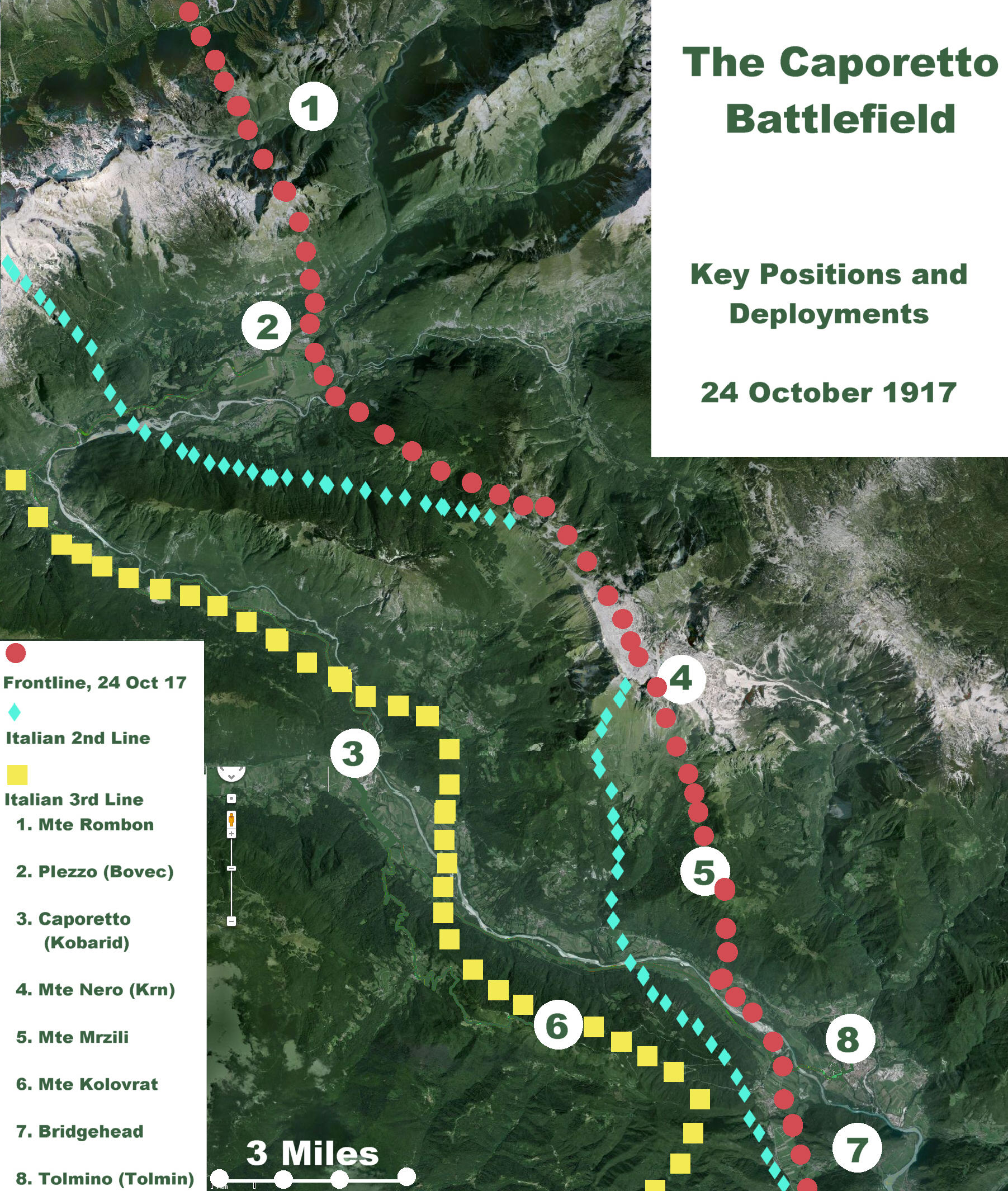
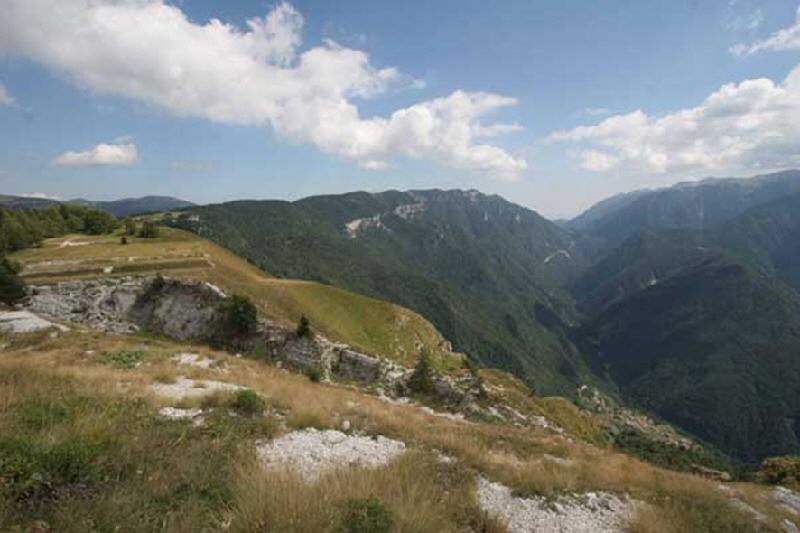
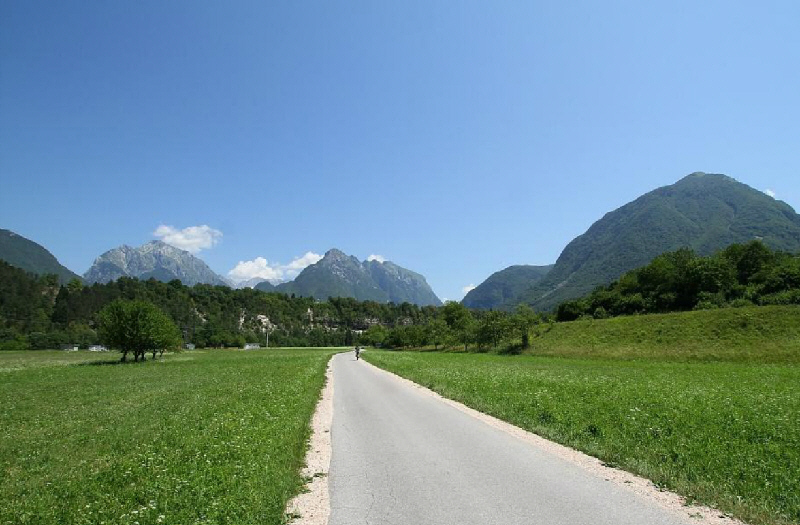
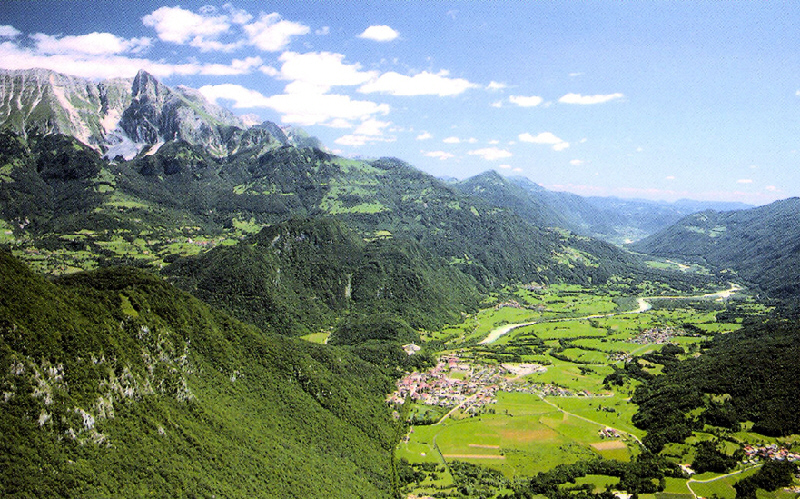
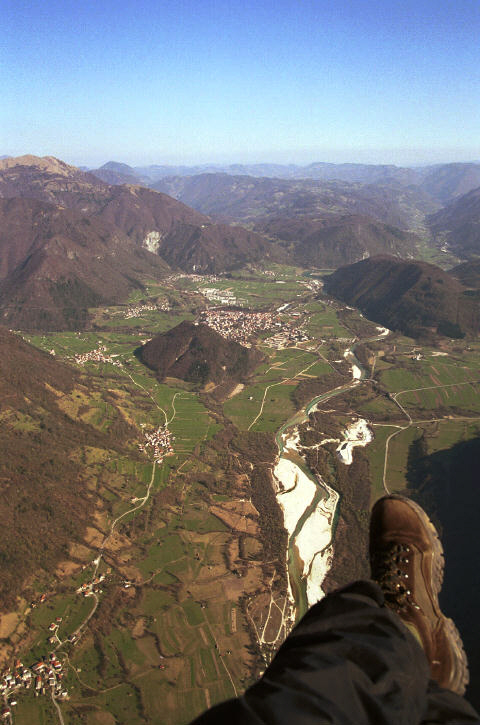
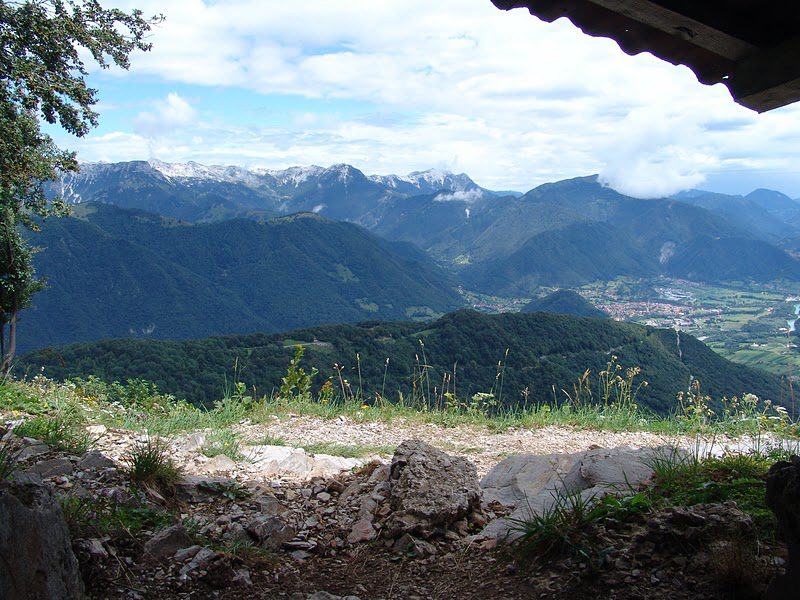
Der Forscher des preußischen IR 63, Matteo D'Angeela, entdeckte, dass die 12. Schlesische Division in 24 Stunden bei Caporetto Tausende Gefangene machte und eine Lücke im italienischen Verteidigungssystem öffnete. General Arnold Lequis erhielt dafür seinen eigenen Pour le Mérite. Am 24. Oktober 1917 wurden 40.000 Italiener getötet oder verwundet, weitere 40.000 saßen auf dem Monte Nero fest und die Verluste der österreichisch-deutschen Truppen beliefen sich auf 6.000 bis 7.000.
ReplyDelete